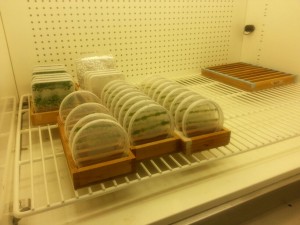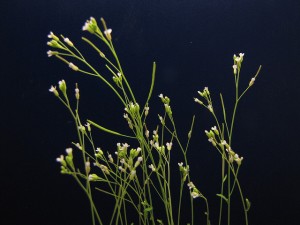Imagine a world without cellulose, what would you see on land? Nothing. There would be no plants, meaning there would be no oxygen in the atmosphere and therefore nothing on the planet would survive. Cellulose is an organic compound, which means that it contains carbon and oxygen, bound together through a strong cell-cell interaction between the oxygen molecules. This interaction is so strong that the human body cannot break it down if ingested. Furthermore, cellulose is used in many different products, such as paper, clothes and food.
Dr. Miki Fujita and her team investigated the effects of a certain mutation in plant has on the cell wall crystallinity, which can have huge implications for all of us. Although published this year, the research initiated in Australia seventeen years ago. The research group at Australian National University obtained the genetically engineered plants and conducted the biochemical studies. Dr. Fujita carried out the microscopy work and cellulose analysis of crystallinity at the Biology Imaging Facility shared by the Botany and Zoology Departments at the University of British Columbia. This work was done at these two different locations.

Racks of Petri dishes of Arabidopsis thaliana growing in a growing chamber. Image taken from Miki Fujita.
To produce the transgenic, genetically modified, plants to work with, Miki Fujita and her team introduced and inserted genes from another organism to the Arabidopsis thaliana plant, which was used because of its ability to grow quickly. Using the Polymerase Chain Reaction (PCR) machine, the specific sequence of the gene that will be inserted is amplified, creating a vast quantity of the sequence. The first step is to amplify the Deoxyribonucleic acid (DNA). DNA fragments are mixed with an enzyme solution in a tube, and placed in a Polymerase Chain Reaction (PCR) machine. This technique allows scientists to create a great quantity of a specific sequence of DNA. The PCR machine starts with a denaturing step where samples of DNA are heated for several minutes. The temperature on the PCR is then cooled for several minutes, allowing the left and right primers to base pair to their complementary sequences. Lastly, the temperature on the PCR is raised again for one minute, allowing polymerase to attach and synthesize a new DNA strand. The recombinant DNA produced by the PCR machines is put into plants to make transgenic plants.

Dr. Fujita using the specialized microscope at the Biology Imaging Facility. Image taken from Miki Fujita.
This research has great implications, whether economical or environmental, cellulose can make life better. Enhancing the cell wall crystallinity will increase the amount of cellulose, which will lead to an increase in the availability of our everyday products, such as paper, clothes and eventually biofuels.
The significance of this research is highlighted in the audio podcast below:
Audio clip: Adobe Flash Player (version 9 or above) is required to play this audio clip. Download the latest version here. You also need to have JavaScript enabled in your browser.
For more information about the experiment, please watch the video below: 
By Amna Awan, Steven Cheema, Cherry Lo (Group 4)


